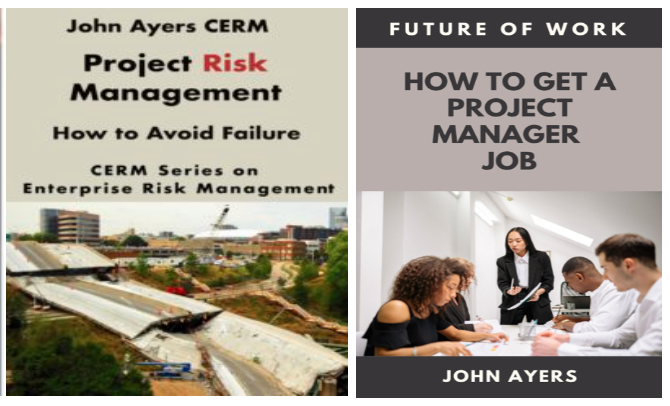 The majority of companies today outsource a major portion (up to 60-70%) of their work scope to subcontractors. As a result, the subcontractors become a risk to your project because you have no direct control over them. For example, if they start to slip their schedule you cannot direct them to put more assets on the job to pull the schedule back. The other risk that is not obvious is that posed by your subcontractors major vendors or subcontractors. To illustrate this point, this article describes a story that I was personally involved in.
The majority of companies today outsource a major portion (up to 60-70%) of their work scope to subcontractors. As a result, the subcontractors become a risk to your project because you have no direct control over them. For example, if they start to slip their schedule you cannot direct them to put more assets on the job to pull the schedule back. The other risk that is not obvious is that posed by your subcontractors major vendors or subcontractors. To illustrate this point, this article describes a story that I was personally involved in.
BACKGROUND
My company won a Navy contract to develop military tactical shelters under a cost plus (CP) contract. Since this was a new high tech shelter development project, we wanted as much flexibility as possible which is why we preferred a cost-plus contract. You do not get the flexibility needed on a new development program with a firm fixed price (FFP) contract.
We placed a CP contract with a subcontractor to develop the shelters. They would perform the project management tasks for the project. They in turn issued a FFP contract with a well-known and respected manufacturer to design, build, test and deliver the shelters. We thought the shelter subcontractor had a CP contract like the rest of us. This proved to be not true and led to problems.
Cost Plus (CP) Contract
The customer (my company) reimburses the expenses on a CP type contract. They assume all of the risk. You are expected to prepare your proposal on the basis of no (or very little) risk because you will get reimbursed for your expensive even if very late and over budget. You get your fee regardless.
Firm fixed price (FFP) Contract
For a FFP contract, your proposal needs to be conservative and include the cost and schedule to manage the risks. The reason is once you are awarded the contract, there is no additional funding coming from the customer. As an example, for a added scope proposal you expect a conservative response from a subcontractor under a FFP contract.
THE PROBLEM
The project progressing on plan until we encountered a design problem approximately four months into the project schedule. We requested our subcontractor to provide a proposal for the change. Since it was a CP contract, we thought our subcontractor estimated cost and schedule impact for the change would be low but it was not. Then we discovered the real problem. Their shelter subcontractor was under an FFP contract and as such submitted a conservative cost and schedule impact for the design change.
At this point, we had no recourse but to manage the situation the best we could since the need for a design change was initiated by us.
HOW DID WE MISS IT?
This problem should have been identified during the fact-finding phase of down selecting to the subcontractor we wanted to work with from the other candidate subcontractors.
Typically, you start identifying and visiting potential subcontractors a year in advance of the anticipated request for proposal (RFP) from the customer. The goal is to reduce the number of candidate subcontractors to three, a good manageable number. Upon receiving the RFP, a request for proposals is sent out to the three candidate subcontractors. Once their proposals are received and reviewed by you and your team, the fact-finding phase commences.
Fact Finding Phase
The purpose of the fact-finding phase is to generate a list of question for each candidate subcontractor to better understand the basis of their proposal. One question that was not asked in this case but should have been– “what type of contract did you give to your shelter subcontractor?” Unfortunately, this question was not asked.
Subcontractor Down-Select
After the fact-finding phase, you know which subcontractor you want to work with. The next step is to visit their facility and negotiate the contract with them. This is another missed opportunity for requesting the type of contract that they had with their shelter subcontractor. But we did not ask the right question and paid the price for it.
LESSONS LEARNED
The lessons learned from this story are:
- Subcontractors are a risk to your project. Carefully and thoroughly select them and frequently monitor them.
- Understand the contractual arrangement your subcontractor has with their major subcontractors and suppliers.
- Visit your subcontractors facility and their major subcontractors and suppliers.
A key to a successful project is selecting a good subcontractor and monitoring them frequently as needed. This includes understanding the contract arrangements between your subcontractor and their major suppliers.
Currently John Ayers is an author, writer, and consultant. He authored a book entitled Project Risk Management. It went on sale on Amazon in August 2019. He authored a second book entitled How to Get a Project Management Job: Future of Work. It is on sale on Amazon. The first is a text book that includes all of the technical information you will need to become a Project Manager (PM). The second book shows you how to get a PM job. Between the two, you have the secret sauce to succeed. There are links to both books on his website. https://projectriskmanagement.info/He has presented numerous Webinars on project risk management to PMI. He writes columns on project risk management for CERM (certified enterprise risk management). John also writes blogs for Association for Project Management (APM) in the UK. He has conducted a podcast on project risk management. John has published numerous papers on project risk management and project management on LinkedIn.
John earned a BS in Mechanical Engineering and MS in Engineering Management from Northeastern University. He has extensive experience with commercial and U.S. DOD companies. He is a member of the Project Management Institute (PMI. John has managed numerous large high technical development programs worth in excessive of $100M. He has extensive subcontract management experience domestically and foreign. John has held a number of positions over his career including: Director of Programs; Director of Operations; Program Manager; Project Engineer; Engineering Manager; and Design Engineer. He has experience with: design; manufacturing; test; integration; subcontract management; contracts; project management; risk management; and quality control. John is a certified six sigma specialist, and certified to level 2 Earned Value Management (EVM). Go to his website above to find links to his books on Amazon and numerous papers.
